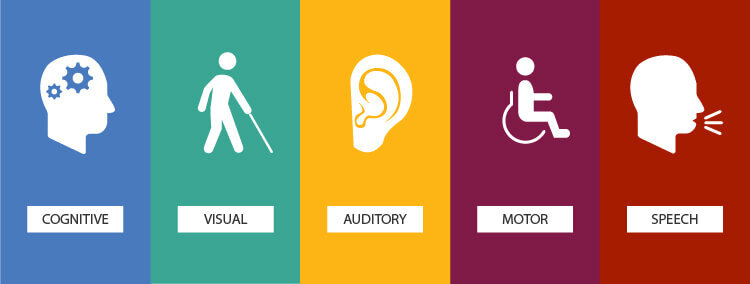Yibai Insights
Explore the latest trends, news, and insights from around the world.
Web Accessibility: Where Everyone Can Click and Thrive
Discover how web accessibility empowers all users to thrive online. Unlock tips to make your site inclusive and user-friendly today!
Understanding Web Accessibility: Key Principles for Inclusive Design
Web accessibility refers to the practice of designing websites that can be accessed and used by everyone, including individuals with disabilities. Understanding the key principles of inclusive design is crucial for creating an online environment that accommodates all users, regardless of their abilities. One of the foundational principles is the Perceivable criterion, which emphasizes that information must be presented in ways that all users can perceive. This includes providing text alternatives for non-text content, such as images and videos, as well as ensuring that text is readable and understandable for users with visual impairments.
The second principle is Operable, which ensures that all interface components and navigation must be operable by a range of input methods, including keyboard navigation for those who cannot use a mouse. Additionally, the Understandable principle mandates that information and the operation of the user interface must be clear and predictable. Finally, the Robust principle highlights the importance of creating content that can be reliably interpreted by a wide variety of user agents, including assistive technologies. By adhering to these principles, web designers can create more embracing digital spaces that foster inclusivity.

How to Evaluate Your Website's Accessibility: A Step-by-Step Guide
Evaluating your website's accessibility is crucial for ensuring that all users, regardless of their abilities, can navigate and interact with your content. Start by performing a manual audit of your site. Inspect various pages for compliance with accessibility guidelines such as the Web Content Accessibility Guidelines (WCAG). Pay attention to elements like alt text for images, keyboard navigation, and the proper use of headings and lists. Additionally, utilize tools such as screen readers to test how your site performs from the perspective of users who rely on assistive technology.
Next, employ automated testing tools to identify potential accessibility issues. These tools can help you uncover color contrast problems, missing alt text, and markup errors. After gathering data from both manual and automated methods, compile a list of issues to address. Prioritize these issues based on their impact on user experience. Finally, engage real users, including those with disabilities, to provide feedback on your website's accessibility. This step-by-step guide will help you create a more inclusive web environment for everyone.
Common Myths About Web Accessibility Debunked
Despite growing awareness of the importance of web accessibility, several myths persist, creating barriers to understanding its true value. One common misconception is that web accessibility is only relevant for individuals with disabilities. In reality, accessibility benefits everyone, including the aging population and users in various environments, such as those with temporary impairments or using mobile devices in bright sunlight. Moreover, adhering to accessibility standards can enhance the overall user experience for all visitors, leading to increased engagement and satisfaction.
Another myth is that implementing web accessibility is too complex and costly. While some may perceive the process as daunting, there are many resources and frameworks available that simplify the integration of accessibility features into existing websites. Web accessibility practices can be incrementally applied, allowing site owners to prioritize changes based on their resources and audience needs. In the long run, investing in accessibility not only fosters inclusivity but can also improve search engine optimization (SEO) efforts, making the site more discoverable.